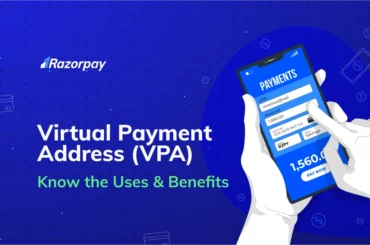We have come a long way when it comes to digital payments in India. We can say this because we see a kirana shop owner with a number of QR code boards and supermarkets sending payment links via WhatsApp.
We are in an era where we can buy everything from a brick and mortar store even if we have forgotten our wallet at home. Simply put, everyone from a 15-year-old to a 70-year-old understands the beauty of UPI, QR codes, debit cards and digital payments as a whole.
However, the fact is, there is a lot more that happens in the digital money movement and there are terms that are Googled from time to time. This blog explains some of these terms so that you know what they mean the moment you hear them!
[Suggested read: How to Accept Payments without a Website or App]
Table of Contents
What is MDR or Merchant Discount Rate?
Did you know that everytime you swipe your credit or debit card using EPOS machines, the seller is charged a certain amount of processing fee?
Make it even simpler by considering this. If you are a business owner and use EPOS machines from time to time, you must have noticed that every time your customer swipes a debit or a credit card, you are charged a small amount.
On the other hand, if you are a customer, you must have noticed shopkeepers and alike offering you to pay via UPI. The reason is the same processing fee which is levied on cards but not on UPI payments.
Merchant Discount Rate or MDR is the rate (processing fee) charged to a merchant (seller or the service providers) to assist the transactions made via credit or debit cards.
This fee is typically between 1%-3% of the overall amount. This means that if a merchant accepts payments using cards worth Rs 20,000, then he or she will have to pay MDR of Rs XX on it.
Please note that the merchant has the ability to negotiate with bank service providers and alike and agree on a particular rate before accepting card payments from their customers.
What is Switching Fee?
If not a number of them, you surely own at least one debit or credit card. And our reports suggest after UPI, cards (or call it plastic money) are the second most preferred options for digital transactions in India. You must have also noticed that these cards are issued by different issuing bodies like VISA, Master Cards, AMEX etc.
While you swipe a card (probably within seconds) there’s a lot that happens at the back end. Out of it, one thing is, the card-issuing institution (VISA, Mastercard, AMEX etc.) levying a processing fee to card’s issuing bank (HDFC, AXIS, ICICI, SBI etc.)
This fee is what we call Switching Fee in the payment ecosystem. This fee can be called as the routing transaction fee between both the bodies and varies from 0.15% to 1.00%.
What is Interchange Fee?
Usually, what happens when you swipe a credit or a debit card? The answer is, funds are transferred from the issuing bank to the acquiring bank, isn’t it? And issuing institutions like VISA and Mastercard facilitate the process.
Ever wondered how the issuing bank makes a share of their profit? Well, they make up for this by charging the interchange fee.
An interchange fee is an amount that the issuing institutions collect from the acquiring bank. Usually, this fee is a percentage of the total transaction plus a fixed amount. And while the issuing institutions collect, assess and set this fee, they are paid to the issuing bank, who issue a particular card.
Please note that the average interchange rate for a credit card is around 1.81% and for debit cards, it’s 0.3%.
What is Payment Service Provider Fee (PSP Fee)?
To understand what PSP Fee is, let’s first understand PSP.
A Payment Service Provider or a PSP is usually a SaaS-based enabler that acts as an aggregator between businesses and the end customer.
For example, let us assume that you are a seller of handicraft items and most of your customers find you over the internet. For some good, you prefer to get paid in advance and to enable this functionality, you need a PSP.
A PSP helps a business accept online payments via multiple modes like credit and debit cards, real-time bank transfers, UPI and a lot more. A number of elements in the payment ecosystem: cards, mobile apps, UPI enabler etc. are managed by PSPs. These PSPs are also responsible for the security of every single online payment transaction.
Now coming to Payment Service Provider Fee, it is the processing fee that these PSPs charge to take care of all the required needs.
These charges vary from PSP to PSP. Razorpay is an example of a PSP. Some PSPs have a fixed model while others may have a variable model. Besides this, some PSPs may charge a setup fee and annual maintenance charges while some may have a different approach.
There is a lot to these charges and hence, before signing up for any PSP, it is recommended to carefully study and analyze every point to avoid wrong and painful decisions.
[Recommended read: UPI P2P Transactions to Attract Charges]
Well, for now, this is it. If you have any more terms which you would like to understand, please mention them in the comment below and we shall get back to you soon!




2 Comments
Well explained using simple words. Thank you so much for this.
Thank you, Bharath!